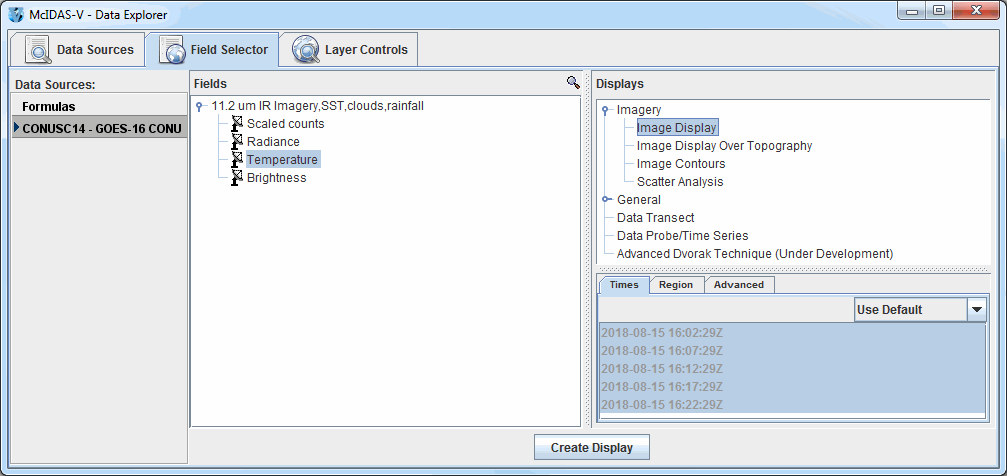
Hourly output between 12-12 UTC is processed daily. It is also converted to netcdf format and made available to the NWS to view in AWIPS. The simulated imagery is then converted to McIDAS AREA format and made avaiable for the SPC, who then makes the output viewable on their NAWIPS system.

When all variables have been receieved at CIRA, an observational operator is run to generate the synthetic imagery for 5 GOES-R ABI bands (6.95, 7.34, 8.5, 10.35, and 12.0 µm). These variables include temperature, water vapor, and other physical and microphysical parameters which are needed for the next step. As soon as the 12-hour forecast is completed, several variables are extracted and scp'ed to CIRA. How is this product created now?Įvery day at 00 UTC, NSSL runs their 4-km WRF-ARW. The synthetic imagery is a Proving Ground Product because it replicates how actual features will appear in GOES-R ABI bands. Why is this a GOES-R Proving Ground Product? This band is often use in combination with other bands, including some of the difference products also available on the Proving Ground page. Additionally, its emissivity properties might help distinguish certain types of clouds from one another, such as cloud liquid water v/s ice. The 8.5 µm band exists in a portion of the spectrum where there is absorption by sulfer dioxide. 2) Product Description: - Purpose of this product: What is the product size?Įach image is just under 1 MB, and every day 25 images are provided. The output is also converted to AWIPS-compatible NETCDF format and provided to the National Weather Service (NWS) Central Region, where a number of NWS offices are displaying it in real-time via AWIPS. Who is receiving this product, and how?ĭaily output from NSSL's 4-km WRF-ARW is provided to CIRA, who then generate synthetic satellite imagery, which is sent to the Storm Prediction Center (SPC) via a McIDAS ADDE server. This product is a combined effort between the National Severe Storms Laboratory (NSSL) in Norman, Oklahoma, and The Cooperative Institute for Research in the Atmosphere (CIRA) in Fort Collins, Colorado, together with the NOAA/NESDIS RAMM Branch. 1) Product Information: - Who is developing and distributing this product? The image is based on a 18-hour forecast from NSSL's 4-km WRF-ARW.

Example of a synthetic 8.5 µm image from 13 April 2011 at 18 UTC.


 0 kommentar(er)
0 kommentar(er)
